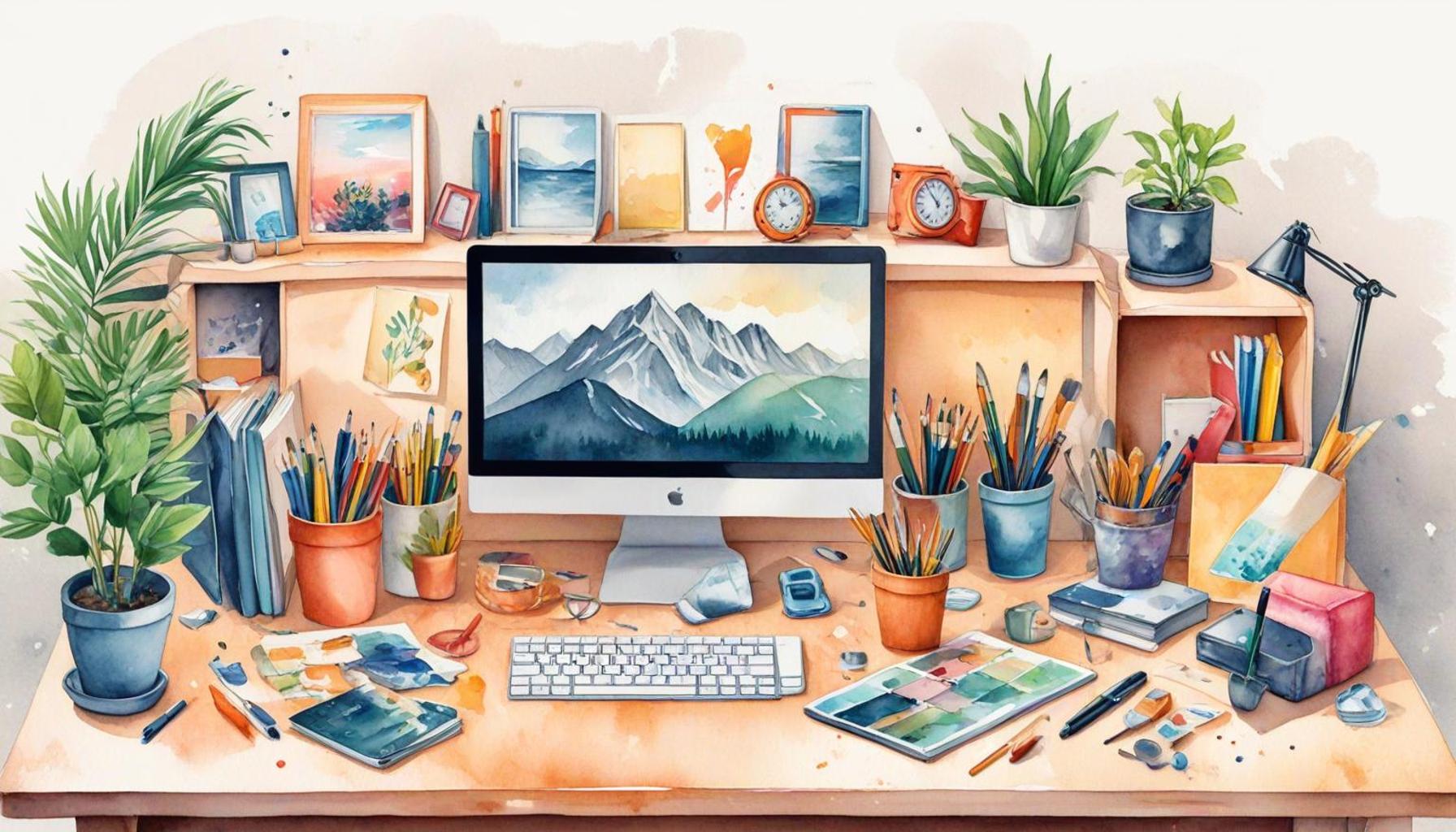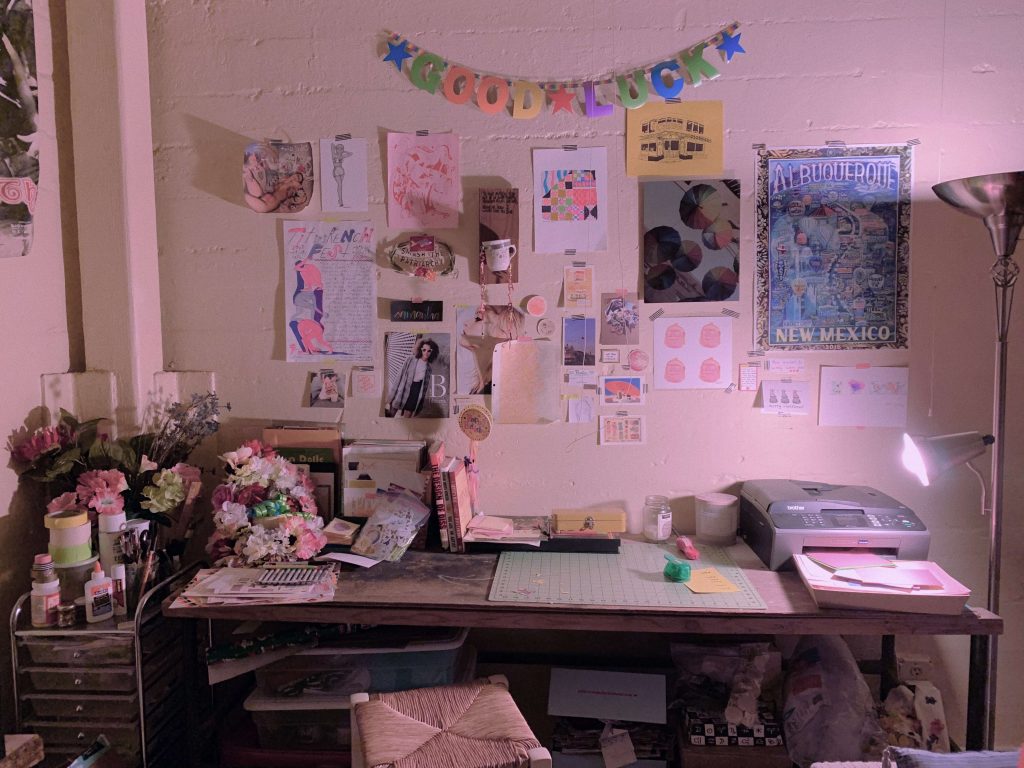The Art of Unpacking: How to Organize Workspaces with Minimalism

Understanding the Impact of a Clutter-Free Workspace
In today’s fast-paced world, our work environments can quickly become overwhelming. A cluttered workspace not only detracts from productivity but can also impede mental clarity. The process of unpacking and organizing your workspace is more than simply rearranging furniture or tidying up; it is a thoughtful approach that allows you to cultivate a setting that nurtures focus and inspires creativity.
Have you ever looked around your office and felt as if the heaviness of your surroundings was weighing down your creativity? It is a common feeling, as chaos can cloud our thoughts and drain motivation. Many individuals face recurring challenges in their office environments, such as:
- Overcrowded desks filled with unused items, which can inadvertently shift focus away from the task at hand.
- Stacks of papers that distract more than inform, creating an ideology of “out of sight, out of mind” rather than effective organization.
- Tech gadgets scattered throughout the workspace that complicate rather than simplify tasks, often creating confusion instead of clarity.
Transitioning to a minimalist workspace brings numerous advantages, including greater efficiency and enhanced well-being. The simplicity of a minimalist approach invites a sense of calm and order that can be especially beneficial in high-pressure environments. Consider the following benefits:
- Improved focus on essential tasks: With fewer distractions, individuals can concentrate on what truly matters—completing projects and meeting deadlines without unnecessary interruptions.
- Less time spent searching for items: A clearly organized workspace makes it easier to locate necessary tools and documents, leading to a significant boost in productivity.
- An aesthetically pleasing environment that inspires creativity: An uncluttered space allows your mind to breathe, encouraging innovative thinking and problem-solving.
The journey towards minimalism in your workspace is not merely about reducing clutter; it is about *strategically* decluttering and making intentional choices about what belongs in your environment. Embrace simplicity by establishing organization systems, such as using drawer organizers for office supplies and digital tools to manage documents and notes. This choice not only aligns with minimalism but can also streamline your workflow.
As we delve deeper into the art of unpacking, you will learn how to strike the perfect balance between simplicity and functionality, designing a workspace that radiates tranquility and promotes success. Are you ready to embark on this minimalist adventure? Your organized and serene workspace awaits. Take the first step today and witness how a clutter-free environment can transform your professional life.

DISCOVER MORE: Click here for tips on maximizing small spaces
Embracing Minimalism: The Foundation of an Organized Workspace
To truly harness the power of a minimalist workspace, it is essential to understand the core principles of minimalism and how they can be applied to your work environment. Minimalism is not about deprivation; rather, it is about making intentional decisions regarding what items and tools you keep around you. This intentionality fosters a sense of peace and purpose, allowing you to channel your energy into the tasks that matter most.
The first step toward embracing minimalism is conducting a comprehensive inventory of your workspace. This means assessing every item on your desk and in your drawers. Ask yourself questions such as:
- Is this item useful or necessary? Determine whether each object serves a clear purpose in your daily work. If not, consider its relevance and necessity.
- Does this bring me joy or motivation? Reflect on whether certain items inspire you or enhance your work experience, such as motivational quotes or meaningful photographs.
- When was the last time I used this? If it has been months since you last utilized an item, it may be time to reconsider its place in your workspace.
Once you have identified the items that no longer serve you, it’s time to engage in the process of decluttering. Decluttering is not just about throwing things away; it involves thoughtful decision-making about each piece in your workspace. Consider categorizing items into three groups: keep, donate, and discard. This approach simplifies the process, paving the way for a clearer workspace.
Moreover, the organization of remaining items should follow the principles of minimalism. Store essential items within reach, while placing less frequently used tools in drawers or cabinets that won’t interfere with your core tasks. This strategy not only optimizes space but also significantly reduces visual clutter, allowing your mind to focus on areas that require attention.
Incorporating Technology to Support Minimalism
Technology can be a valuable ally in achieving a minimalist workspace. By leveraging digital tools for organization and task management, you can reduce the clutter associated with physical documents. Consider adopting digital note-taking applications, cloud storage solutions, and productivity software that allow you to keep your work accessible while minimizing the amount of paper and physical tools in your environment.
Another effective strategy is to utilize desk organizers and cable management systems. Such accessories help maintain a tidy workspace by grouping similar items together and preventing tangled cords from undermining your minimalist efforts. By creating a designated space for all your tools and equipment, you are less likely to experience the chaos that comes with disorganization.
As you continue to uncover the art of unpacking your workspace, the journey towards simplicity becomes clearer. Developing a system that prioritizes functionality and elegance can be transformative, inviting a new era of productivity and creativity. In the upcoming sections, we will explore practical tips for maintaining this minimalist approach long-term, ensuring that your workspace continues to support your professional endeavors.
| Category | Advantages |
|---|---|
| Simplicity | A minimalist workspace fosters a clear mind, allowing for enhanced focus and creativity. |
| Efficiency | With less clutter, you can maximize productivity by reducing distractions and streamlining tasks. |
| Aesthetics | A clean, organized space enhances the visual appeal of your work environment, making it more inviting and pleasant. |
| Enhanced Organization | Minimalism promotes better organization habits, as every item has a designated place, making it easy to find essentials. |
Exploring these advantages reveals the transformative power of minimalism in the workspace. By embracing simplicity, efficiency, aesthetics, and enhanced organization, you can truly master the art of unpacking and redesigning your work environment. This transformation not only improves productivity but also contributes to your overall well-being, making each workday more enjoyable. Further discussions could address practical steps to implement these changes effectively, as well as tips for overcoming common challenges posed by upgrading traditional cluttered spaces into streamlined sanctuaries.
DISCOVER MORE: Click here to delve deeper
Strategic Aesthetics: Designing a Minimalist Workspace
In addition to decluttering and organizing, maximizing the aesthetics of your workspace is a crucial component in mastering the art of unpacking with minimalism. The design choices you make can influence both your mood and productivity levels. A well-designed workspace should not only be functional but also visually appealing, creating an atmosphere that fosters creativity and focus. By integrating elements that align with minimalist principles, you can create a serene environment that enhances your working experience.
Let’s delve into several key aspects that contribute to the aesthetic value of your workspace. Firstly, it is essential to choose a color palette that reflects a minimalist ethos. Soft, neutral colors like whites, grays, and pastels can help calm the mind and reduce distractions. While bold colors can be stimulating, they may not often harmonize with the minimalist approach. Consider using accents with nature-inspired hues, such as greens or earth tones to naturally connect your workspace with the outside world.
Additionally, incorporating natural elements into your workspace can greatly enhance ambiance. Houseplants not only purify the air but also serve as an appealing visual focal point. Options like succulents or snake plants are low-maintenance and add a touch of life without overwhelming the space. This union of nature and simplicity contributes to a balanced workspace that invites productivity.
Ergonomics and Functionality: Balancing Form and Purpose
While aesthetic appeal is significant, the functionality of your workspace cannot be overlooked. An effective workspace design harmonizes ergonomics with minimalism. Selecting office furniture that is not only chic but also comfortable is vital for your well-being during long working hours. Ergonomic chairs and adjustable desks should be prioritized, as they manifest the minimalist principle of focusing on what serves you best.
Moreover, consider the spatial arrangement of your workspace. It is advisable to provide enough room for movement, as cramped areas can feel suffocating and limit productivity. Adopting a layout that allows for easy mobility and access to essential items can foster a sense of freedom, enhancing your overall working experience.
Implementing a Routine for Maintenance
Creating a minimalist workspace is merely the beginning; maintaining it requires a continuous commitment to minimalism. Establishing a daily or weekly routine for tidying up can ensure that your workspace retains its organized feel. Allocate a few moments each day to put things back in their designated spots, assess any new items brought into the workspace, and evaluate their necessity.
Consider adopting the one-in, one-out rule: for every new item you introduce, let go of an existing one. This practice reinforces the principles of minimalism, preventing you from slipping back into cluttered chaos. Regularly revisiting your organizational strategies and boundaries helps reinforce your commitment to a minimalist workspace, promoting clarity and focus in your professional endeavors.
As we continue our exploration of the art of unpacking, let us now examine the psychological benefits of minimalism in the workplace. Understanding how a simplified environment can enhance mental clarity and emotional well-being is essential for those seeking to uplift their professional lives through minimalism.
DISCOVER MORE: Click here for essential tips
Embracing Minimalism: Cultivating a Cleaner, More Productive Workspace
In conclusion, the journey of mastering the art of unpacking through minimalism transcends mere organization; it is about crafting a workspace that is not only tidy but also conducive to creativity and productivity. By embracing a minimalist lifestyle, individuals can significantly reduce distractions, promote mental clarity, and enhance their overall professional experiences. Integrating a thoughtful color palette, incorporating natural elements, and ensuring ergonomic functionality are all vital components of cultivating a serene and inspiring work atmosphere.
Moreover, the commitment to maintaining this sanctuary of simplicity cannot be underestimated. Establishing routines, such as the one-in, one-out rule and dedicating regular time for tidying, ensures that the minimalist approach does not fade over time. By continuously evaluating our workspace and being mindful of our surroundings, we can sustain a productive environment that reflects our personal and professional values.
As individuals increasingly recognize the profound impact their workspace has on their mental wellness and output, the principles of minimalism offer a transformative path forward. Transitioning toward a decluttered workspace paves the way for enhanced focus and creativity—a refreshing perspective in today’s fast-paced world. Ultimately, the art of unpacking lies not solely in the physical organization of items but in cultivating a mindset geared toward simplicity, clarity, and intentional living. For anyone seeking to revolutionize their work life, there is much to be gained from a minimalistic approach.
Related posts:
Vertical Organization: Space Optimization Strategies to Make the Most of Every Inch in Minimalist En...
Maximizing Small Spaces: Minimalist Organization Tips for Urban Apartments
Neutral Colors and Textures: Creating Harmony in Minimalist Spaces through Visual Optimization
Creating Calm Sanctuaries: Space Optimization Techniques in Minimalist Rooms
Organizational Rituals: Space Optimization Practices for a Minimalist and Intentional Life
Space and Functionality: How Multfunctional Furniture Transforms Minimalist Environments

Linda Carter is a writer and organization expert specializing in minimalism and personal organization. With extensive experience helping individuals create clutter-free, functional spaces and adopt mindful habits, Linda shares her knowledge on our platform. Her goal is to empower readers with practical advice and strategies to simplify their lives, stay organized, and achieve a sense of calm and balance in their daily routines.